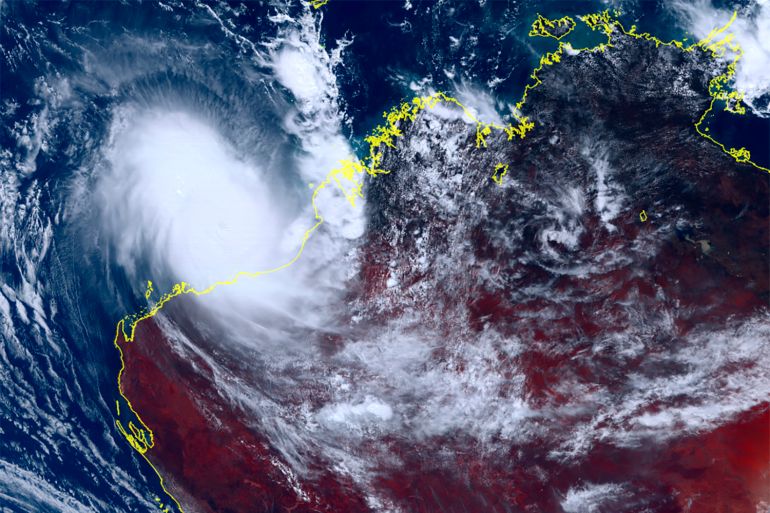Australia’s northwest braces for strongest cyclone in a decade
Cyclone Ilsa is predicted to gather strength before making landfall on Western Australia’s northern coast.

Strong winds and heavy rain are lashing Australia’s northwest, as Cyclone Ilsa bears down on the sparsely-populated but resource-rich region.
The storm, likely to be the strongest to hit the northwest in nearly 10 years, could bring “very destructive” winds of up to 275kmph (170mph), the Bureau of Meteorology said on Thursday.
Keep reading
list of 4 itemsCyclone Freddy death toll in southeast Africa surpasses 500
Malawi moves to rescue survivors after Cyclone Freddy
Photos: After cyclone’s devastation, cholera fears rise in Malawi
Food and fuel have been delivered to remote areas, and people have been advised to stock up on essentials including water.
A yellow alert, advising residents to be ready to shelter from a cyclone, has been issued for several remote towns.
The alert covered Port Hedland, a major iron ore shipping hub where the majority of the 15,000 residents are employees of mining companies. The town is about 17-hour drive north of Perth, the capital of Western Australia.
Port Hedland Mayor Peter Carter said the destructive winds could turn flying pieces of debris into “missiles in the air”.
“That’s what causes all the damage, that is what injures people,” he told the Australian Broadcasting Corporation (ABC). “Everyone is on edge. They understand that cyclones are what they are. They’re very, very unpredictable.”
Some 700 residents from the remote community of Bidyadanga were being evacuated, the fire service said.
Ilsa is expected to make landfall late on Thursday or early on Friday and could affect a 600km (373-mile) stretch of land from just north of Port Hedland eastwards to just south of tourist town Broome, the weather bureau said in its latest update.
Port Hedland, which is used by iron ore producers such as BHP Group and Fortescue, may escape the worst of the storm, the Bureau of Meteorology said.
A Fortescue spokesperson said it had suspended shipping operations and non-essential travel to the port but did not expect “any significant impact to operations at this stage”.
In April 2021, Cyclone Seroja hit Western Australia’s west coast with gusts of up to 170kmph (106mph), damaging houses, and toppling trees and power lines.
“They’ve got a lot of strength in them, the ability to not only destroy trees and knock down power lines but lift up those loose items in the yard, including trailers and caravans,” meteorologist Miriam Bradbury told the ABC.